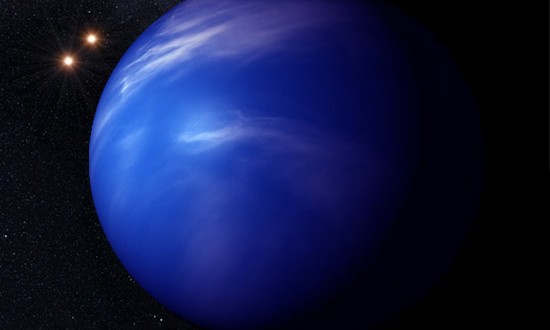University of Toronto released this video earlier this month. It’s made from a series of images captured between November 2013 and April 2015, and it shows an exoplanet, a planet orbiting a distant star, moving through 18 months of its 22-year orbit around its star.
Discovered in 2008, β Pic b is a gas giant 10 to 12 times the mass of Jupiter, with an orbit roughly the diameter of Saturn’s. It is part of the dynamic and complex system of the star β Pictoris, which lies more than 60 light years from Earth. The system includes comets, orbiting gas clouds, and an enormous debris disc that in our solar system would extend from Neptune’s orbit to nearly 2,000 times the distance from the Earth to the sun.
Because the planet and debris disk interact gravitationally, the system provides astronomers with an ideal laboratory to test theories on the formation of planetary systems.
“The images represent the most accurate measurements of the planet’s position ever made,” says PhD candidate and lead author Maxwell Millar-Blanchaer. “We’re able to see both the disc and the planet at the same time. With our combined knowledge of the disc and the planet, we’re really able to get a sense of the planetary system’s architecture and how everything interacts.”
Refinements to measurements of the exoplanet’s orbit and the ring of material circling the star shed light on the dynamic relationship between the two. The paper also includes the most accurate measurement of the mass of β Pictoris to date.
This value makes it very unlikely that β Pic b will pass directly between us and its parent star.
Astronomers have discovered nearly 2,000 exoplanets in the past two decades. Most have been detected with instruments – like the Kepler space telescope – that use the transit method of detection, whereby the planet causes a faint drop in a star’s brightness but cannot be resolved itself.
With GPI, astronomers image the actual planet – a remarkable feat given that an orbiting world typically appears a million times fainter than its parent star. This is possible because GPI’s adaptive optics sharpen the image of the target star by cancelling distortion caused by the Earth’s atmosphere. The system then blocks the star with a device called a coronagraph, revealing the exoplanet.
“It’s fortunate that we caught β Pic b just as it was heading back – as seen from our vantage point – toward β Pictoris,” says Laurent Pueyo, a co-author of the paper. “This means we can make more observations before it gets too close to its parent star and that will allow us to measure its orbit even more precisely.”
Agencies/Canadajournal

 Canada Journal – News of the World Articles and videos to bring you the biggest Canadian news stories from across the country every day
Canada Journal – News of the World Articles and videos to bring you the biggest Canadian news stories from across the country every day

